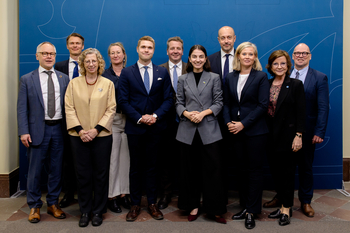How to mobilise finance for loss and damage

At COP28 in Dubai, Wenger Law and the Nordic Council of Ministers launched a study on how to mobilise finance for loss and damage. In our side-event on innovative financing sources and solutions for responding to loss and damage, we aimed to bring the discourse forward on how to ensure the continued and enhanced financial support for loss and damage action.
Keynote speaker Mr. Ole Thonke, the Under-Secretary for Development Policy of Denmark stated:
“I really welcome the positive opening of COP28 with pledges to loss and damage of more than half a billion dollars. However, funding through traditional public sources will not be sufficient to fill the financial gap we are facing. Therefore, we need to explore the possibilities for innovative financing. In this context, the Nordic study on ‘Loss and damage financing solutions and sources’ is very timely. I hope the study will stimulate political dialogue on solutions for innovative financing by highlighted opportunities on approaches that are available to politicians and government officials as we aim to scale up financing for loss and damage.”
Funding through traditional public sources will not be sufficient to fill the financial gap we are facing. Therefore, we need to explore the possibilities for innovative financing.
Mr. Mattias Frumerie, the Climate Ambassador and Head of Delegation for the UNFCCC for Sweden, stated:
“Already today a number of funds, on national, regional and international level are contributing to countries responses to loss and damage, however it is clear that the scale of finance that will be needed to meet climate change will only increase as the world gets warmer. I hope the report launched today will contribute towards a better understanding of new and innovative sources and solutions.”
I hope the report launched today will contribute towards a better understanding of new and innovative sources and solutions.
Following both keynotes, a panel discussion with international experts underlined the importance to leverage the potential of private sector financing of responses to loss and damage.
Our study aims at furthering the political dialogue from a factual perspective. It showcases different sources of finance and their potential in enhancing finance for loss and damage. It finds that carbon markets and mechanisms, taxation and levies, private sector and insurances could have potential for funding loss and damage.
The event invited to a broader dialogue including the public and private sector, highlighting opportunities for international cooperation and national government action, giving guidance on the choices that are in the hands of politicians and government officials.



